With Sony ceasing sale of its tape machines in March, some 60 years after Ampex’s two-inch quad machine was first unveiled, UK Screen chief executive Neil Hatton rewinds to the start of the story
If you want to buy a new video tape recorder (VTR) to play your library of archived content, you are probably too late.
The final Digi- Beta and HDCam SR machines were due to roll off Sony production lines at the end of March, signalling the end of the video tape era and the epoch of file mastering that is already well under way.
It is 60 years since the launch of the first broadcast-quality video recorder, when Ampex revealed its revolutionary two-inch quad VTR in a moment of pure theatre that shaped the evolution of TV.
At that time, the US TV industry was largely based in New York, with programmes syndicated to affi liate stations across the country by means of recordings called ‘kinescope’ in the US, or ‘telerecording’ in UK.
The process involved pointing a 16mm film camera at a TV monitor, with the recorded programme then delivered to broadcasters by courier.
Apart from the problem of topical content being at least two days old by the time it reached Mid-America or the West Coast, the quality of the kinescope recordings was dreadful compared with the original live transmission.
‘Dead for three days’
Faye Emerson, actress and 1950s TV chat show host, described actors as looking “as if they had been dead for at least three days and the whole business seems to be projected through what looks like an old gunny sack”.
Emerson theorised that Hollywood executives had underestimated TV because “most of them have never seen television as we know it… only an unreasonable facsimile thereof “.
Despite the poor quality, in the early 1950s, TV networks were churning out a staggering 550 million feet of kinescope film a year - more than the combined output of all the Hollywood film studios.
By 1951, a transcontinental network of microwave links and coaxial cables was completed, enabling live transmission across the US for the first time.
However, when it was early evening primetime in New York, it was mid-afternoon in Los Angeles. The only way of time-shifting the programmes to maximise the audience was yet more kinescope recordings.
The quality had improved with the use of 35mm film, but the running costs were huge.
The three-hour time difference allowed for live East Coast transmissions to be filmed, the negatives to be processed and the shows to be telecined direct-to-air for the West Coast in the correct slot.
The films would still be warm from lab dryers as they were loaded onto the telecine and became known as ‘hot-kines’.
Processing costs
The time shift and syndication problems in radio had already been solved by magnetic audio tape recording perfected in 1948 by Ampex, with financial help from Bing Crosby. If video could be recorded onto magnetic tape in the same way, it would eliminate the processing costs of kinescope and the tape could be reused many times.
So the race was on to invent the VTR, not as a production tool but primarily as a cost-effective means of time-shifting live TV for the Pacific time-zone.
Crosby saw the potential of the VTR to further his career as an all-round entertainer and financed development through his own company. RCA and the BBC’s Vera project were also in contention.
All these prototypes were to produce recognisable but poor pictures in the labs but none were good enough for broadcast.
The basic problem of recording video was that the tape had to move across the recording heads at well over 100 inches per second in order to capture sufficient information.
The RCA, BBC and the Crosby-led approach was to move the tape at high speed across stationery heads. But amid great secrecy, Ampex had come up with a method known as two-inch quad; rather than moving the tape quickly, Ampex fitted four moving recording heads on a disc spinning at high speed at right angles to the two-inch wide tape, writing numerous video tracks across the tape’s width rather than along its length and reducing the tape’s speed to just 15 inches-per-second.
The small Ampex team, led by Charlie Ginsberg, included Charles Anderson, Fred Pfost, Alex Maxey, Shelby Henderson and a young trainee called Ray Dolby (pictured below), who would later help to revolutionise many aspects of audiovisual technology.

On 14 April 1956, Ampex decided to stage a surprise reveal of its VTR on the eve of the National Association of Radio and Television Broadcasters show in Chicago, the fore runner to today’s NAB.
CBS was holding a meeting with its affiliates in the Conrad Hilton Hotel. There were TV monitors in the room showing the output of a camera trained on a podium where CBS vice-president Bill Lodge gave a review of the company’s business plan.
Hidden behind a curtain were Anderson, Ginsberg and Pfost with their VTR recording the presentation. After a few minutes, Lodge paused and on cue the team replayed his speech from the tape.
There was a stunned silence that lasted a full 15 seconds while it dawned on delegates that what they were seeing was not a kinescope.
Anderson took the silence to mean they had “screwed up”, but then the cheering started.
It continued for several minutes as the curtain was drawn back to reveal the Ampex team and their creation. Several years later, Fred Pfost said he was still unable to recall those moments without a tear in his eye.
Five orders?
In a huge underestimation of the market, Ampex thought the US would be saturated with just five VTRs and globally they might sell 30.
Despite a price tag of $50,000 each - $438,000 (£303,000) in today’s money - the salesmen came away from Chicago with orders for more than 70 and in the next five years Ampex delivered more than 1,000 machines.
The Ampex VRX-1000 was first used on air by CBS on 30 November 1956, for a timeshifted replay to the Pacific coast of Douglas Edwards With The News, which had been broadcast live on the Atlantic coast three hours earlier.
That tape was wiped and re-used many times, so sadly this historic video recording was not preserved. The earliest surviving video tape dates from 13 October 1957. A sponsored programme promoting the Ford Edsel car was the first live show produced at CBS Television City, in Hollywood, to be time-shifted by video tape, and against company policy an operator saved it from being erased by hiding it for 30 years.
Two-inch quad VTR dominated video recording for the next 25 years and developed through the 1960s into an editing tool that became the beginnings of what we now know as the post-production industry.
Obsolescence has always been a problem for video tape as older formats have been replaced by new technology.
In the late 1970s, quad was eclipsed by the one-inch C format. The BBC transferred its quad tapes to the C format in the 1980s, and in turn they were migrated to D3, a digital video tape format.
When D3 became obsolete around the turn of the millennium, the BBC had to transfer more than 125,000 items, not to another video tape but into files, long before the agreement of the AS-11 DPP fi e specification.
File delivery of broadcast programmes is now routine, so has the problem of format obsolescence been solved? Will we need to migrate the content again?
Unfortunately, we will still have to ensure that it is playable after future changes to disk storage tech nology or updates to the Linear Tape-Open (LTO) data format.
In the file domain, this is much simpler as the migration can be automated and easily verified, but we also must be mindful that changes to the file wrapper, codec or operating system do not thwart our preservation strategies.
It’s a delicious irony that those kinescope films which pre-date the video tape era are still easily playable and continue to provide a rich seam of mid-century TV archive.
The rise and fall of video tape
1927 John Logie-Baird records 30 line TV onto 78rpm records
1947 Eastman Kodak introduces the kinescope film recorder
1951 First coast-to-coast TV in USA, time-shifted using kinescope
1956 The first broadcast quality VTR - Ampex debut 2” Quad at NARTB in Chicago
1956 First transmission from 2” Quad– Douglas Edwards and the News on CBS
1958 BBC use VERA on air during Panorama – and drop it shortly afterwards for 2” Quad
1972 Phillips introduce the first domestic VCR
1975 VHS and Betamax begin fight over domestic video cassette format
1980 Electronic News Gathering begins to replace 16mm news film with High-Band U-matic (BVU)
1986 BetacamSP cameras and VTRs with component analogue recording begin to replace film for single camera documentary shooting

1987 Sony D1 – the first component digital VTR – mainly used for commercials
1991 Panasonic D3 selected by BBC. ITV opts for alternate composite format Sony D2 selects a different composite digital VTR format to ITV to replace 1”C format
1993 Sony DigiBeta introduced for acquisition, post and distribution
1994 Panasonic D5– Studio VTR with uncompressed digital SD recording – as used by Channel 4

1995 MiniDV/DVCAM/DVCpro – The tape formats that enabled self-op shooting
2003 HDCAM SR introduced – the dominant and final HD tape format for programme mastering
2004 Panasonic file based cameras introduced recording onto P2 cards
2006 Sony introduces XDCAM HD file based recording onto optical disksXDCAM EX file based recording onto solid-state SxS cards

2011 Tsunami devastates Sony factory in Japan causing a world-wide shortage of HDCAM SR
2014 Led by the DPP, UK broadcasters all accepting programme deliveries as AS-11 files
2016 Sony ceases manufacture of DigiBeta and HDCAM SR cameras and recorders







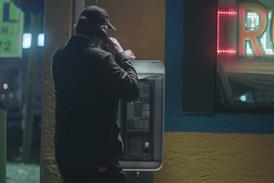



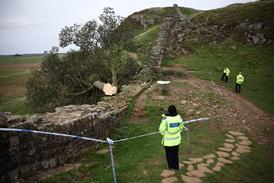








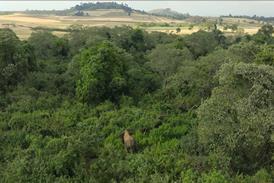
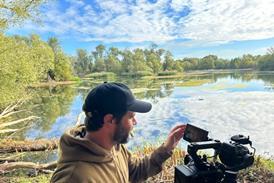
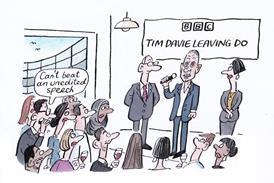



No comments yet